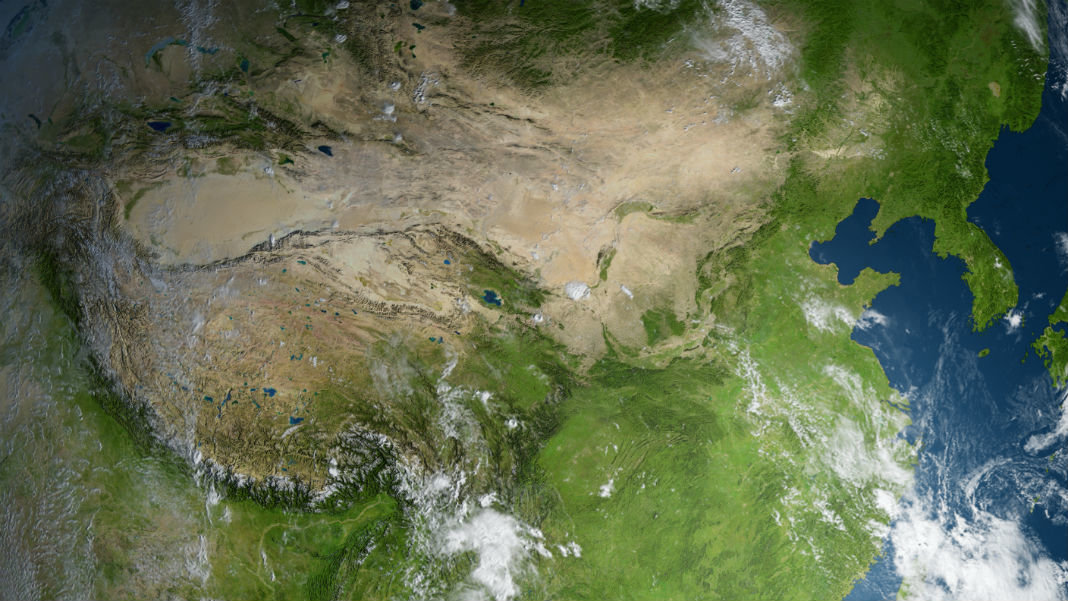Artificial rain is set to fall on mountainous plains three times the size of Spain. At least, that’s the plan for China’s latest weather manipulation project.
As reported by the South China Morning Post (SCMP), the system includes solid fuel burners, drones, planes, artillery, and a network of weather satellites covering vast swathes of the Indian Ocean. The aim is to create a distributed system capable of combatting climate change and increasing rainfall in the region by up to ten billion cubic meters, or approximately seven percent of China’s annual water consumption.
However, while early reports indicate success, the project—and artificial rain technology in general—has its critics and detractors. Some refer to the unproven nature of the technology, and others fear the project could increase international tensions in the volatile region.
Super-Sizing Known Tech and Adding Satellites
China’s new project involves placing thousands of chambers burning solid fuels on the Tibetan plateau. When lit, the chambers will produce silver iodide. The iodide acts as condensate for water molecules in the air. As more and more water molecules gather around the iodide molecules, they become heavier and fall to the earth as rain or snow. The process is known as cloud seeding.
Each year, moist monsoon winds from the Indian Ocean sweep north towards the Himalayan mountains. Real-time data, collected from a network of 30 weather satellites monitoring monsoon activities, will ensure that the burning of fuel coincides with optimal conditions for binding the monsoon water mists with the iodide released by the burners, thereby increasing rain and snowfall. The burner network will be assisted by cloud seeding done by drones, planes, and even artillery in an effort to maximize its effect.
The SCMP, citing an unnamed scientist working on the project, reports that 500 burning chambers have already been erected, with initial results proving very promising. According to the report, a burning chamber costs around $8,000. Once completed, “tens of thousands of chambers” will be positioned throughout the Tibetan plateau. The ambition is to increase rainfall over an area of about 1.6 million square kilometers (620,000 square miles), making it the world’s largest artificial rain project.
Climate change is a prime reason China is undertaking this project. According to the SCMP, climate models predict that the area will suffer severe droughts as temperatures rise and regional rainfall decreases. This would pose significant risks for both China and its neighbors, as the Tibetan plateau is a vital source of water for much of the region.
Increasing Quest for Weather Control
China has been working on technological ways of manipulating the weather, including finding ways to gather or distribute fresh water, for many years, including during the 2008 Beijing Olympics.
Another recent proposal is the so-called Sky River project, first announced in 2016. Its goal is to increase water supply in China’s arid northern regions by evaporating water and using north-turned air currents to transport the vapor north.
Closer to the ground, weather manipulation has been suggested as a way to combat the high pollution levels found in many of the country’s major cities. The project involves attaching large sprinkler-like systems to the outside of skyscrapers. Spraying water out into the air would—hopefully—bind toxins and gases to the water,thereby reducing toxic smog.
China is by no means the only country pursuing weather manipulation projects. In 2016, 56 countries had such programs, compared to 42 in 2011.
The idea has been around for a while and was even used during the Vietnam War. Known as Operation Popeye, the objective was to increase rainfall during monsoon season to make the terrain muddy and difficult to traverse for enemy fighters. According to a Paleofuture article, the unofficial moniker of the Air Force pilots who carried out the missions was “make mud, not war.”
Given Rain by Taking Water?
Final approval for the project by Chinese authorities is still pending, but it has already raised concern in other regions in China as well as neighboring countries. Manipulation of the weather to produce more rain over the Tibetan plains might lower rainfall elsewhere. Tibet is also often referred to as Asia’s water tower and is the source of rivers like the Brahmaputra, Mekong, Yangtze, and Yellow River. Could increased rainfall in certain geographic regions have an influence on how much water flows to each river? This question is thus far unanswered, and these kinds of worries extend to other weather manipulation projects around the world.
Critics also point to the less-than-proven viability of weather manipulation.
Ma Weiqiang, a researcher with the Chinese Academy of Sciences’ Institute of Tibetan Plateau Research, called the experiment “unprecedented,” but he doubts the chambers’ ability to affect the weather.
“I am skeptical about the amount of rainfall they can produce. A weather system can be huge. It can make all human efforts look vain,” Ma said to SCMP.
Others are more optimistic about the potential found in such projects.
“[…] even a ten percent increase in rainfall or snowfall may be worth the expense,” Bart Geerts, a professor of atmospheric science at the University of Wyoming, put it to Business Insider.
Image Credit: Thomas Bredenfeld / Shutterstock.com

No comments:
Post a Comment